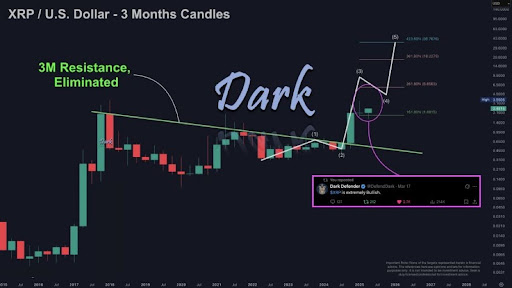Zerebro developer Jeffy Yu has been found alive at his parents’ home in San Francisco, days after faking his suicide on a livestream that launched a supposed posthumous memecoin past $100 million.Yu’s case isn’t the first time crypto has blurred the line between real death, faked death and something in between. From missing founders to sealed caskets, the industry has a long history of exits that left behind more questions than closure.Here are five unsettling cases — real, staged or unresolved — that continue to haunt the crypto world.1. Jeffy Yu faked his death, then his crypto pumpedA clip of Yu broadcasting his “suicide” circulated on May 4. The video showed him smoking a cigarette before pulling the trigger, then the camera dropped.Hours later, a scheduled social media post announced the posthumous launch of LLJEFFY, a memecoin described as his “final art piece.” The coin surged to nearly $105 million in market cap.LLJEFFY’s market fell to $5.63 million from its $105 million peak. Source: DEX ScreenerBut Yu wasn’t dead. Blockchain wallets tied to him kept moving. A copy of a letter — allegedly written by Yu — described the exit design as a response to ongoing harassment and blackmail.Yu’s obituary on online memorial site Legacy.com has now been removed. Source: Vee/Legacy.comReporters from The San Francisco Standard eventually found Yu at his parents’ home. He refused to comment on the suicide stunt or whether he profited from it.In the world of memecoins, this kind of spectacle isn’t new. In late 2024, Pump.fun’s livestream feature triggered a wave of stunts — suicide threats, animal abuse and other shocking acts — to pump token prices. The company shut it down and later relaunched a toned-down version.2. A crypto whistleblower’s descent into paranoia and possible deathIn February 2025, a suspected Chinese programmer who called themselves Hu Lezhi burned 500 Ether (ETH) (worth around $1.3 million at the time) and donated another 1,950 ETH (over $5 million) to various groups like WikiLeaks and the Ethereum Foundation. All of it came with onchain messages alleging that a hedge fund called WizardQuant (aka Kuande Investment) was using “brain-computer weapons” to control its employees — including Hu.Related: 4chan rises from the dead: How the imageboard moves crypto marketsThe messages read like sci-fi horror. Hu claimed he’d been a mind-control test subject since childhood and warned of a future where humans were nothing more than “puppets or complete slaves to the digital machine.”Hu Lezhi’s final messages before disappearing. Source: EtherscanIn one of his last messages, Hu said they would “leave the world” if they reached the final stage of becoming a “complete slave to the digital machine.” Some translated the series of messages as an onchain suicide note.To date, they haven’t re-emerged. And unlike Yu, Hu’s wallet hasn’t moved.3. The crypto whiz and the cryptic tweet before his deathOn Oct. 28, 2022, DeFi developer Nikolai Mushegian posted a chilling tweet: “CIA and Mossad and pedo elite are running some kind of sex trafficking entrapment blackmail ring… they are going to torture me to death.”By the next morning, he was found face-down in the surf near his beach house in Puerto Rico.A final tweet, a washed-up body, and silence louder than truth. Source: Nikolai Mushegian/fucnti0nZer0Mushegian wasn’t a random crypto kid. He was an early developer at MakerDAO and a key architect of the stablecoin ecosystem. He was also increasingly paranoid — or, depending on who you ask, increasingly aware. Critics dismissed the tweet as a mental health crisis, but others weren’t so quick to look away.Related: 8 major crypto firms announce US expansion this yearThe timing of his death sparked a wave of theories: assassination, targeted silencing or even MKUltra-style mind control.Officially, it was ruled an accidental drowning.4. Crypto investors can’t believe QuadrigaCX founder’s deathIn December 2018, Gerald Cotten, the 30-year-old founder of Canadian crypto exchange QuadrigaCX, reportedly died in India from Crohn’s disease. But there was one massive problem: He was the only person with access to $190 million in crypto.Cotten’s case was so high-profile that it became the subject of a Netflix documentary. Source: Netflix/YouTubeAs news of his death spread, so did the questions. There was no public autopsy, his death certificate misspelled his name (spelling Cotten as Cottan), the casket was sealed, and a growing army of investors wanted his body exhumed for DNA testing.Quadriga officially declared bankruptcy in 2019. Thousands of clients were locked out of their funds. Eventually, investigators discovered the cold wallets were empty, prompting auditor EY to begin recovery efforts.Some suspected Cotten had run a Ponzi scheme for years and used his death as the ultimate escape plan. The rumors have not been confirmed, but the official story remains that he died a tragic death, as confirmed by Indian authorities. 5. Reports of Cryptoqueen’s death are greatly exaggeratedSelf-styled “Cryptoqueen” Ruja Ignatova, co-founder of the $4-billion OneCoin scam, hasn’t been seen since she boarded a Ryanair flight from Sofia to Athens in October 2017.Cotten left no access. Ignatova left no trace.Since then, rumors have swirled. Some say that she underwent plastic surgery and lives under a new identity or that she’s being protected by the Bulgarian mafia. A Bulgarian investigative outlet claims Ignatova was allegedly murdered in November 2018 on a yacht in the Ionian Sea and that her body was dismembered and dumped overboard under the orders of Bulgarian crime boss Christophoros Amanatidis to cover his ties to OneCoin.More recently, German officials reportedly assumed that Ignatova is in a South African suburb living with private security.Ignatova has been on the US FBI’s 10 Most Wanted list since 2022. The US Federal Bureau of Investigation raised Ignatova’s bounty to $5 million in June 2024. Source: FBIMagazine: 10 crypto theories that missed as badly as ‘Peter Todd is Satoshi’









